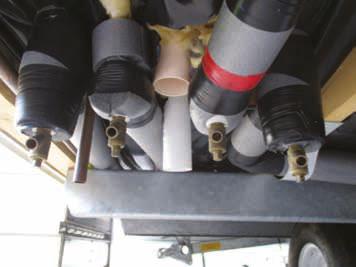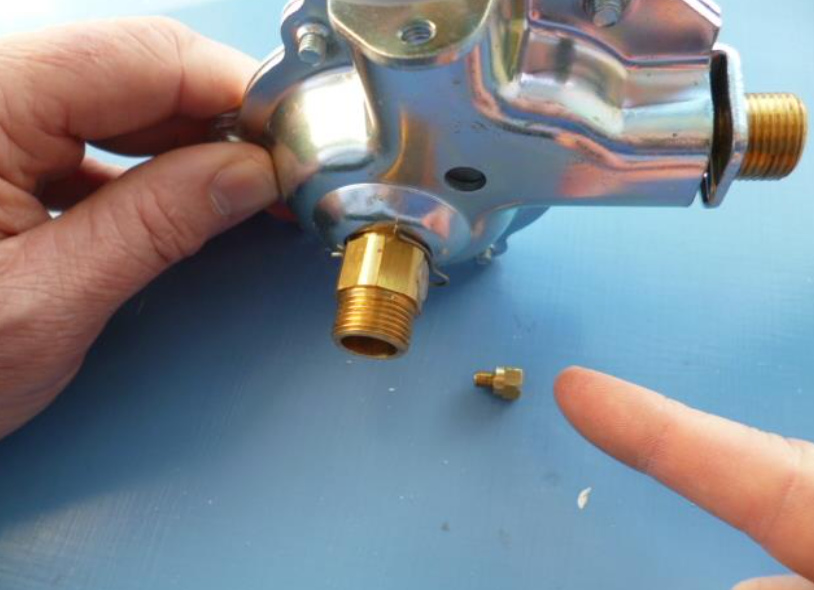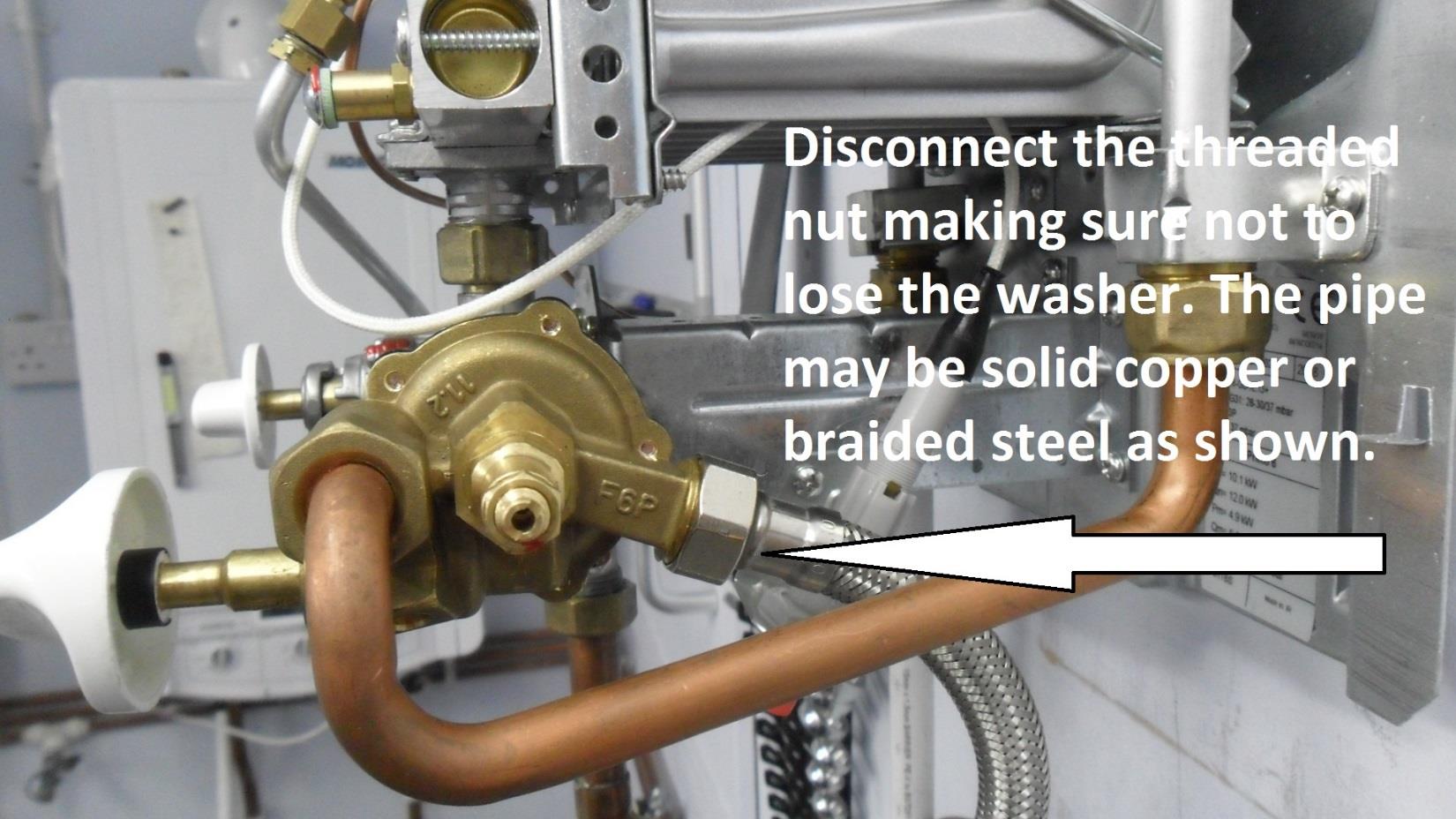Introduction
This article is relevant to the following Morco models:
- D51B, D61B and D61E
- G111E and G11E
- F11E and F11EL
- MP6 and MP11
- EUP6 and EUP11
- EUP11RS
Fresh water freezes at 0 degrees Celsius and expands by 9% with a significant force that will destroy:
- Pipe work
- Water heater components
- Taps and shower valves
Frost and ice causes damage by two methods:
- Water freezing within the home in appliances, pipes taps or TMV valves (found in shower mixers)
- Water pressure increasing within the entire system caused by water freezing in pipes outside of the home
Method 1 is usually a problem when the home is left empty and this can only be addressed by a drain down – see below
Method 2 can occur when owners are using the home during a cold period even though fires and fan heaters are keeping the inside of the home relatively warm. See the section of this article titled “Water Pressure Damage”.
DRAIN DOWN
If you leave fresh water in your caravan system over the winter you will run the risk of damage. This can only be avoided by removing the fresh water from the system – we call this a DRAIN DOWN. You may wish to drain down the fresh water system yourself using the procedure in the next section but we STRONGLY RECOMMEND that you have this carried out by an experienced engineer as many caravan systems can only be completely drained by blowing the water out and this requires specialist equipment. View the £50-£60 charge for a drain down as a mini insurance policy and always ask the engineer if he has equipment to blow the water out. The two most common parts to be damaged by frost are the shower valve and the water control assembly in a water heater and the costs to replace these are around £100 each.
Drain Down Procedure
- Turn off the fresh water supply stop valve outside the holiday home
- Disconnect the fresh water feed outside the home if possible as this protects from flooding due to stop valve failure
- Turn the water control knob on the water heater fully anticlockwise
- Open all hot and cold taps and shower valves and place the shower head in the tray
- Use the Holiday Home Owner’s Handbook to locate all the fresh water drain cocks under the van – some of these may not be obvious
- Open these drain cocks
- Remove the water heater drain screw if fitted – see below

The finger is pointing at the drain plug in the brass body of the cold water inlet at the bottom of the boiler. This drain plug should be removed taking care to retrieve the plastic washer.

The drain plug has been removed but the washer is still adhered to the brass body.
The D51/61, G11E and F11E have a drain plug which is located at the bottom of the boiler and is shown in the pictures above. This should be removed after all the drain down procedure has been carried out and the plug and washer placed safe for use after the winter.
The MP6, MP11, EUP6, EUP11 and EUP11RS water heaters do not have a drain screw and so you will need to remove the cold-water inlet fitting. Turn off the gas supply, remove the front cover and disconnect the cold water pipe as shown in the photograph on the following page.

This procedure does not guarantee that all the fresh water will leave the system. Most modern homes have double check valves in the TMV2 shower mixers and these trap fresh water and stop the flow of water around the system once the drain cocks and taps are open. It may appear that all the water has left the system, but beware! This pitfall can be avoided by removing the shower mixer valve/valves from the system after the cold water supply has been switched off and the drain cocks opened. Many manufacturers provide access panels and these may make the removal of shower mixers easier. Removal of some shower mixers requires the use of special tools.
In addition pipe work layouts can cause air locks leaving water inside vulnerable components such as the water heater or shower mixer.
Re-commissioning the home is a reverse of the above procedure.
Water Pressure Damage
During the last winter Morco had many examples of water heaters and mixer taps being damaged overnight even though the owners/customers were staying in the home and had some form of heating in the home. What actually happens is that the home, including the boiler cupboard, remains warm due to the fire or fan heaters being on. Obviously no damage due to ice formation can occur inside the home. However, nearly all holiday homes have the hot and cold water pipes suspended beneath the home. These pipes are lagged in line with the National Caravan Council standards but they will only protect the water within the pipes from freezing for a short period of time in cold conditions. While the home owners are sleeping in a warm bed with the fire and fan heaters on, the mains water inside the hot and cold pipes under the home is turning to ice. This has the effect of compressing the water that is still unfrozen elsewhere in the system. This water may be in the pipes under the van, inside the water heater, in the pipes inside the home and in the shower mixers or mixer taps. As the ice continues to form, the pressure increases. Water heaters are usually specified to cope with mains water pressures up to 10 bar, TMV2 shower mixers will generally be damaged by pressures below 10 bar. The hot and cold water pipes under the typical home has a capacity of 3.6 litres. As ice forms, that volume increases to 3.925 litres and, as water is pretty much incompressible, this extra 0.325 litres needs to go somewhere. Depending on where the water turns to ice in the pipe, it may push apart a pipe fitting under the van or it may damage water control assemblies or heat exchangers or cause irreparable internal damage to shower mixer valves. There are 2 reasons why the problem is largely caused overnight:
- Temperatures are lower at night
- The hot and cold water outlets are not used as the owner and their family are asleep. Continually using hot and cold water during the day draws through the water that is about to freeze under the home and replaces it with water from pipes that are buried underground that may be 5-10°C warmer
Solutions to Water Pressure Damage
There are a number of solutions:
- The holiday home could have trace heating fitted to all 35-40m of hot and cold pipes under the home. This can often be specified when the home is being manufactured
- Some lodges and most park homes have the pipework under the home sealed inside a “box floor”. This protects the pipes far better than tubes of insulation but is expensive to include in a design
- Alternatively on the evening before a predicted heavy frost, the owner can;
- Fill the kettle and take a shower
- Turn off the cold water supply to the home at the external stop valve
- Leave the fire or fan heaters on as usual
- Open all the hot and cold water outlets in the home – for mixer taps put them in the mid position to allow both hot and cold water to leave the pipes
- If the water now freezes in the pipes the increase in pressure will force a small amount of water through the outlets and avoid damage. There may still be some damage to pipework under the home but this is easily fixed and does not run the risk of flooding the home
- After a good night’s sleep - use the water in the kettle for a cuppa prior to turning off all internal outlets and then turning the water on at the external stop valve.
Download a copy of this help article.

